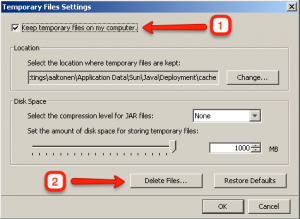The Solar client is installed directly from your application server using Java. The only prerequisite is Java 6, which you can find on the web start page below.
To access the server, you will need to know the correct web start URL to enter in your web browser. To assemble this, you will need to know two pieces of information:
The installation URL will look similar to: http://192.168.0.100:2080/
To install Solar, navigate to the URL using the web browser of your choice and click the Click Here to Install Solar Eclipse button.
If you receive an error, make sure that Java 6 is installed. If not, use the Click Here to Install Java link to install the appropriate version of Java. You will need administrator privileges to install Java, but not Solar.
Solar is a Java Webstart application, so it is installed on a per-user basis, not a per-workstation basis like Eterm. The benefit is that all users, even non-administrator users, can install Solar. The downside is that you cannot load Solar one time for all users of the workstation. You may, however, create a normal Windows shortcut to the Solar URL, which will allow users to click a single link to launch Solar, regardless of whether it was previously installed or not.
To give users a direct link from which to install or launch Solar, you may send a hyperlink or create shortcut directly to the web start URL. To obtain this URL, right-click on the Click Here to Install Solar Eclipse link and copy the URL. The URL should be similar to to following:
http://172.17.188.36:2080/SolarInstallService.jnlp
